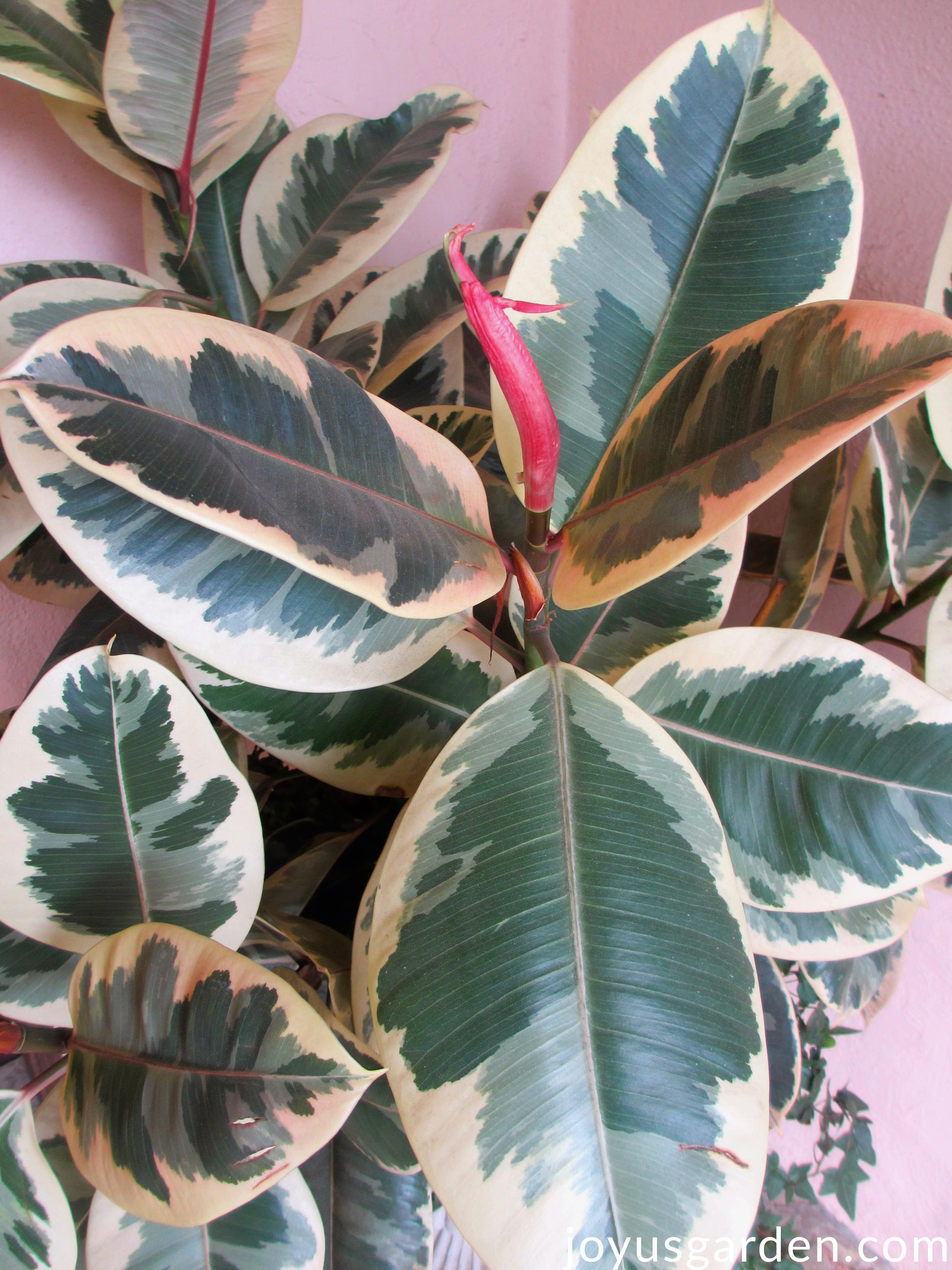
Source www.joyusgarden.com
Welcome to our comprehensive guide on caring for rubber tree plants. Rubber trees, scientifically known as Ficus elastica, are popular houseplants known for their attractive foliage and easy maintenance. Whether you are a new plant parent or an experienced gardener, this article will provide you with valuable insights on how to ensure the optimal growth and thriving of your rubber tree plant.
Within this guide, we will cover key topics ranging from lighting requirements and watering best practices to fertilizing techniques and common pest control. Whether you are looking to improve the health of your existing rubber tree plant or contemplating to introduce one to your indoor garden, you will find all the essential information you need right here.
1. The Importance of Proper Lighting
Understanding Light Needs
Proper lighting is crucial for the health and growth of your rubber tree plant. Being native to tropical regions, these plants thrive in bright, indirect light conditions. Ideally, they should receive around four to six hours of filtered sunlight each day. However, direct exposure to harsh sunlight can scorch the leaves, so it is important to strike the right balance.
Choosing the Perfect Spot
When selecting a spot for your rubber tree plant, look for an area near a bright window, but where the direct sunlight won’t hit the leaves. North or east-facing windows are usually the best options. You can also consider using sheer curtains or blinds to filter the sunlight if necessary.
2. Essential Watering Techniques
Understanding Watering Needs
Proper watering is vital for the well-being of your rubber tree plant. These plants prefer slightly moist soil, but overwatering can lead to root rot and other issues. It is important to strike a balance between keeping the soil moist and ensuring proper drainage.
Watering Frequency
The frequency of watering depends on various factors such as humidity levels, season, and potting conditions. As a general guideline, check the top inch of soil and water when it feels slightly dry to the touch. Always remember that it is better to underwater than overwater your rubber tree plant.
3. Proper Fertilizing Techniques
Selecting the Right Fertilizer
Fertilizing your rubber tree plant is essential for providing it with the necessary nutrients to support healthy growth. When choosing a fertilizer, opt for a well-balanced, water-soluble one specifically formulated for houseplants. Look for a fertilizer with a balanced NPK ratio, such as 10-10-10 or 20-20-20, to ensure a good mix of nitrogen, phosphorus, and potassium.
Frequency and Application
During the active growing season, which typically extends from spring to early fall, fertilize your rubber tree plant every 2-4 weeks. Dilute the fertilizer according to the package instructions and apply it to damp soil to avoid burning the roots. It is advisable to discontinue fertilization during the winter months when the plant experiences a dormant period.
4. Table Breakdown: Essential Care Requirements
Table: Essential Care Requirements for Rubber Tree Plants
| Aspect | Requirement |
|---|---|
| Light | Bright, indirect light |
| Water | Slightly moist, well-draining soil |
| Temperature | 65-80°F (18-27°C) |
| Humidity | Moderate to high humidity |
| Fertilizer | Well-balanced, water-soluble, every 2-4 weeks during growing season |
| Pruning | Trimming to control size and promote bushiness |
| Pests | Mealybugs, scale insects, spider mites |
5. Frequently Asked Questions (FAQ)
Q: How often should I repot my rubber tree plant?
A: Rubber tree plants generally require repotting every two years or when the roots become overcrowded. Choose a new pot that is one size larger and use a well-draining potting mix.
Q: Is it normal for rubber tree plants to drop leaves?
A: Yes, it is natural for rubber tree plants to shed some leaves, especially older ones. However, if you notice excessive leaf drop, it may be a sign of stress caused by overwatering, improper lighting, or temperature fluctuations.
Q: Can I propagate my rubber tree plant?
A: Yes, rubber tree plants can be propagated through stem cuttings. Ensure the cutting has at least two leaves and a node. Place the cutting in a container with water or moist soil and provide it with warm temperatures and bright, indirect light.
Q: How can I make my rubber tree plant bushier?
A: To encourage bushier growth, you can prune the top of the plant or pinch off new growth tips. This will redirect the energy to the lower branches, resulting in a fuller appearance.
Q: What are some common pests that affect rubber tree plants?
A: Some common pests that may infest rubber tree plants include mealybugs, scale insects, and spider mites. Regularly inspect the leaves for any signs of pests and treat them with appropriate insecticidal soap or systemic insecticides if necessary.
Conclusion
Caring for your rubber tree plant doesn’t have to be a daunting task. By following the guidelines provided in this comprehensive care guide, you can ensure that your rubber tree plant thrives and adds a touch of natural beauty to your indoor space. Remember to pay attention to lighting, watering, fertilizing, and other essential aspects of care, and your rubber tree plant will reward you with its stunning foliage and vibrant growth. Happy gardening!